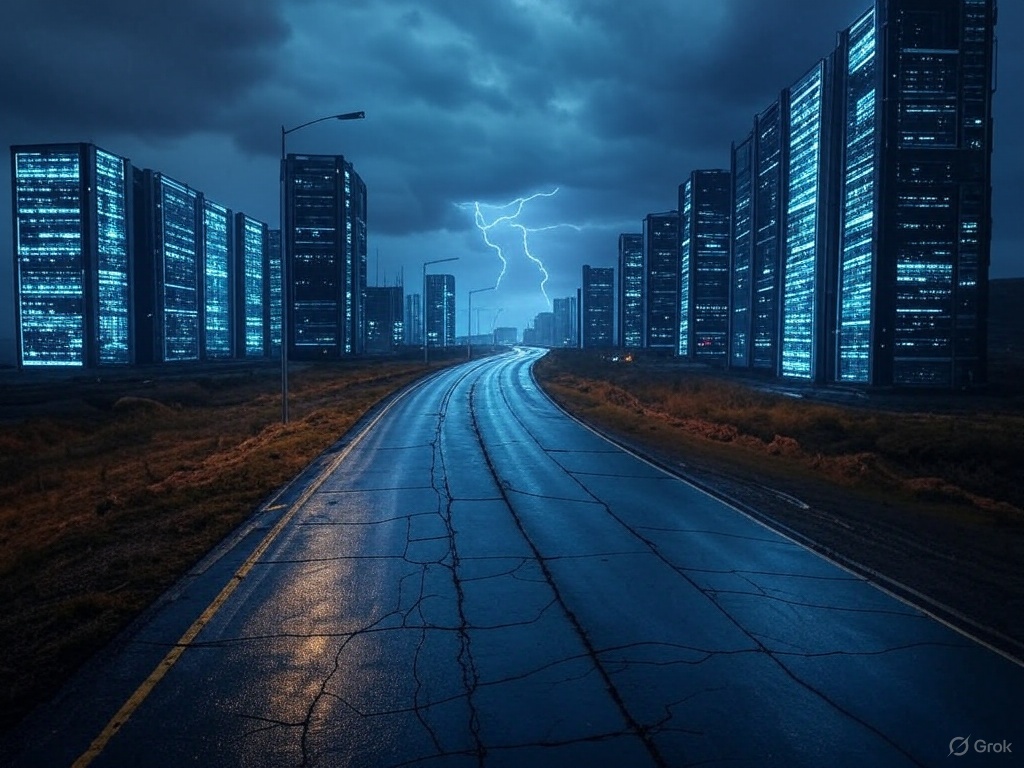Ray Dalio, the billionaire founder of Bridgewater Associates, is sounding the alarm. Again. And this time, he’s not just talking about another market dip or temporary downturn—he’s warning of something much bigger. A financial crisis, possibly within the next three years.
Why should anyone care? Because Dalio has spent decades studying economic cycles, predicting financial upheavals with a track record that few can match. When he speaks, markets listen. And right now, he sees trouble brewing beneath the surface of America’s seemingly strong economy.
The Debt Problem No One Wants to Face
Dalio is blunt: the United States is drowning in debt, and it’s only getting worse. Government borrowing has reached a point where issuing more bonds isn’t just risky—it’s unsustainable. The national debt is sitting at roughly 125% of GDP. The fiscal deficit? A staggering 7% of GDP, the highest among major economies.
What does this mean? Simply put, the government is spending far more than it’s bringing in. And it’s borrowing just to keep up with past debts. Dalio calls this a “debt death spiral”—where borrowing fuels even more borrowing until something breaks. At some point, investors may lose confidence, bond yields could spike, and a financial shock could follow.
So, when does the breaking point come? Dalio gives it three years, give or take. And if policymakers don’t act soon, he believes the U.S. could be staring down a fiscal heart attack.
History Repeats: What Past Crises Teach Us
Dalio doesn’t make predictions in a vacuum. He studies history, looking at long-term debt cycles that stretch across decades, even centuries. And he sees clear warning signs that today’s economy is following a dangerous historical pattern.
Debt crises tend to follow a predictable path: governments overspend, debt piles up, and eventually, tough choices arise. Either they print more money to pay off debts (which fuels inflation), default on obligations (which triggers financial chaos), or drastically cut spending (which can slow growth and increase unemployment). None of these options are painless.
The last time the U.S. faced such extreme debt issues? The 1930s and 1940s. And what followed? A major financial reset, social unrest, and eventually, World War II. Dalio warns that while history doesn’t repeat exactly, it often rhymes.
What Needs to Be Done—And Why It Won’t Happen Easily
Dalio has a solution: reduce the fiscal deficit from 7.5% of GDP to a more sustainable 3%. He calls it the “3% solution.” Not impossible, but politically challenging. Cutting spending is never popular. Raising taxes? Even less so.
Timing is crucial. Dalio urges policymakers to act now—while the economy is still relatively stable—rather than waiting until a full-blown crisis forces their hand. But here’s the problem: Washington isn’t known for proactive decision-making.
With a divided political landscape and upcoming elections, the likelihood of major fiscal reforms happening anytime soon seems slim. And that means Dalio’s warning may not just be a possibility—it may be inevitable.
The Market’s Blind Spot: Stocks vs. Reality
If the economy is so fragile, why are markets still soaring? The S&P 500 gained 24% in 2024. Unemployment is low. GDP is still growing. It doesn’t look like a crisis is looming.
But Dalio sees beyond the headlines. He warns that markets can be deceiving—booming stocks don’t mean the economy is fundamentally healthy. Just as in the lead-up to past crises, short-term optimism can mask deeper problems. Rising interest rates, high government spending, and hidden weaknesses in the job market could eventually tip the balance.
A major concern? The tech sector. Since 2022, over 400,000 high-paying jobs have disappeared in technology alone. It’s a slow drip that could turn into a flood if the economic downturn accelerates.
Where to Invest When Uncertainty Reigns
So, what should investors do? Dalio has a few ideas.
First and foremost: gold. He believes it’s one of the safest assets in times of economic uncertainty. While he acknowledges Bitcoin as part of a diversified portfolio, he sees gold as the real protection against currency devaluation and financial instability.
Diversification is key. Dalio advises against putting too much faith in overvalued sectors, like artificial intelligence stocks, which have seen massive price surges. “A great company that gets expensive is much worse than a bad company that’s really cheap,” he warns. In other words—don’t chase hype.
He also suggests looking beyond the U.S. economy. With potential instability ahead, having assets spread across different markets and currencies could offer protection from America’s debt problems.
The Bigger Picture: Political and Social Fallout
The economy doesn’t exist in a vacuum. Political and social forces play a role in shaping economic outcomes—and vice versa. Dalio sees troubling parallels between today’s world and the turbulence of the 1930s, when economic instability fueled political extremism.
In the U.S., growing wealth gaps, political polarization, and internal migration trends all point to deeper fractures. High-tax states like California and New York are losing residents to lower-tax states like Texas and Florida. These aren’t just economic shifts—they reflect a broader realignment of American values and priorities.
Globally, Dalio warns of increasing geopolitical tensions. Economic strain often leads to nationalism, trade wars, and even military conflict. If economic conditions worsen, international relations could become even more volatile.
The Road Ahead: Act Now or Pay Later
Dalio’s message is clear: a crisis isn’t inevitable, but the window to prevent it is closing fast. The U.S. can still make adjustments—cut deficits, control spending, and make tough but necessary policy choices. But history suggests that governments rarely act until a crisis forces their hand.
For investors, the takeaway is equally clear. Prepare for uncertainty. Diversify. Hedge against inflation. Avoid overvalued assets. And most importantly—don’t assume that just because the market looks strong today, it will stay that way tomorrow.
The clock is ticking. And if Dalio’s prediction holds true, the next few years will determine whether the U.S. economy bends—or breaks.



